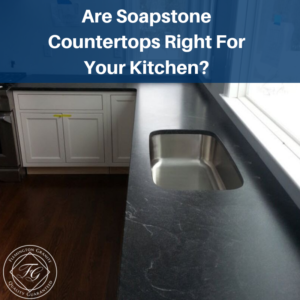
Granite has been a common, desired material of choice for countertops for a very long time – in fact, it’s hard to pinpoint exactly when in history this material first really caught on. It’s highly sought after due to its luxurious look, durability, and timelessness. Given the fact that there are many different kinds of granite, trends change and cycle over generations as to which type is considered the most trendy and timely at any given point. It’s been a long time since white granite was the “in” thing, but in recent years it’s been on the upswing.
A desire for a crisper, brighter ambient look for kitchens has been the prime mover behind increasing popularity of white granite in recent times. This could be partially due to a desire for something more environmentally sound, relying less on artificial light to brighten a space. Either way, this luminous material has recently started to be associated with a modern, warm appearance.
But, before you run off to order white granite for your kitchen, it’s important to take a moment to understand the nature of the stone, and look at the different kinds available. You may be surprised to find out that many types of white Granite aren’t overtly white at all.
The Nature of White Granite
Like any other stone, the hue, tensile strength, graining and texture of white granite is determined by a combination of minerals in the mix. The opaque white of many types of white granite is the result of a mineral known as feldspar, while the milky white is a result of quartz. The spackling and graining, usually of a black appearance, is a result of a lesser-known mineral called amphibole.
Due to granite always being a combination of various minerals, you will never find a pure white, solid granite. In fact, you’ll be hard-pressed to find a granite that is anyone solid color due to its very nature. Following this train of thought, even specific regions of a piece of granite are unlikely to be a solid white, generally being smoky in appearance or milky instead.
Different Types of White Granite
As we said earlier, there are many varieties of white granite, mostly determined by the caller of the grains in the hue of white itself. One of the more common are white granite with black and gray minerals, which have a classic look often mistaken for marble. Alaska White, Colonial White and Silver Cloud are the more common varieties of this type of granite.
White granite with Brown and burgundy minerals is a little less common, but is growing in popularity in recent years due to its neutral, universal matching ability. These have a somewhat rustic, warm appearance, and they pair well with most natural woods and ceramics. One of the more popular of these is River White granite, while White Spring with its blotchy, speckled appearance can make a sharp statement.
White granite with black, gray, and blue minerals can be relatively rare, though Ice White granite does pair well with white and black cabinets for a sharp, deep contrast. Alaska White sometimes takes on this appearance as well.
Lastly, and the least common of these, are granite types with gray and green minerals. These have an interesting, streaky appearance, and actually tend to look more brown than green. They have achieved some level of popularity in recent times due to their ability to help complete the sense of a European country kitchen, though those whom fret over cracks may find the crack like streaking to be somewhat maddening.
Finally, when considering pricing, you’re going to spend the least on the most common, popular granites, due to the ready supply of them. If you’re looking for something more unique, and less popular, you’re going to pay quite a bit more for it.
To learn more about the various types of white granite, and to learn about which ones pair best with different motifs, fill out our contact form below or call us today.






